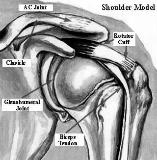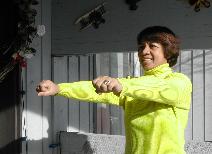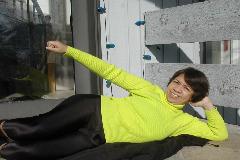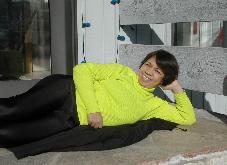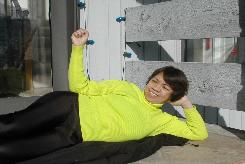HOSPITAL PRIVILEGES
Prevention of Shoulder ( Rotator Cuff) Injuries
Why should you read this article? Thousands of rotator cuff injuries occur every year. Most are preventable.
Once the rotator cuff is injured, recovery from surgical repair can be a tedious and lengthy process of
rehabilitation lasting up to four months. Some tears cannot be repaired or recur resulting in a shoulder that has
no active motion .
This is what the rotator cuff looks like within the shoulder:
How does it work? The rotator cuff depresses the humeral head making it possible for the large deltoid shoulder
muscle to elevate the arm. When the rotator cuff is not working, the lever arm is lost and no matter how strong
the deltoid is, the shoulder cannot be lifted. These small rotator cuff muscles enable the larger ones to work.
How do we prevent injuries? The best way is to exercise the rotator cuff at least two to three times per week with
the exercises depicted in the following diagrams. Use dumbbells ranging from 2 to 10 lbs. If you’re just starting
off and have not exercised at all just lift the weight of your arm and that’ll be enough. Allow for three sets of 15
repetitions for each exercise on each side.
The first rotator cuff exercise is forward elevation. In this exercise only lift the arms to a point point parallel to
the floor and not above that. Pause when you reach the top for one second before lowering the weights. Arms
can be exercised individually or at the same time. Remember to lift and lower the weight slowly.
Forward elevation:
The second rotator cuff exercise is lifting the arms to the corners of the room The same guidelines apply to
this exercise as well.
Corners of the room:
The key components of exercising the rotator cuff are initiation of abduction and external rotation. Two other
wonderful exercises which isolate the rotator cuff even more are depicted in the following pictures. To exercise
the right side lie on the left side and while lying on the left side elevate the arm 30 to 45 degrees in line with the
side of the body as shown. Lie on the left side to exercise the right side.
The next exercise involves external rotation. Again, while lying on the left side bring the arm across the body
with the elbow at 90 degrees resting the arm on the stomach as if it were in a sling and then externally rotate
keeping the elbow at the side. Rotate the arm externally like a backhand stroke in ping-pong.
There are many other exercises as well, check with your local physician or physical therapist for further
information. A strong rotator cuff will improve your quality of life and your ability to compete in overhead and
throwing sports. As you age you’ll be less likely to have rotator cuff pain or injuries if the muscles stays in
proper condition.
Dr. Mark Hopkins is a Board Certified Orthopedic Surgeon specializing in sports medicine. He has worked as a
volunteer physician for the United States Olympic Committee. He is an avid snowboarder and outdoor
enthusiast. He has been assigned as a reservist to the 944th MDS at Luke AFB since August 2001.
Mark Hopkins, M.D.
Board Certified Orthopedic Surgeon
P.O. Box 680518, 1205 Ironhorse Drive
Park City, Utah 84068
